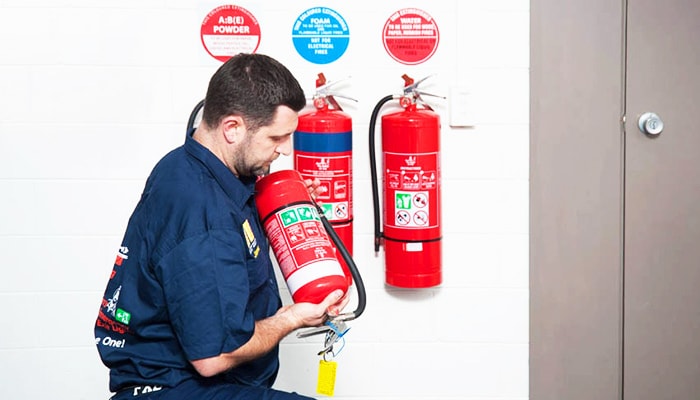
Since all the fire safety equipment installed in any place is used as the first attempt in putting down a fire to make sure it does not spread widely within minutes before the fire department can take over, for this very reason it is imperative to ensure that all the equipment works perfectly. There are a lot of different companies which provide fire protection services which also include fire safety equipment inspections, tests, and tags. Therefore it is best that you keep your fire safety gear functional instead of waiting for an emergency to take place before investing in one.
Not sure when the testing and tagging will happen for your fire safety equipment? Take a look below and learn more about it.
Equipment Checks: Which items require it?
As far as fire safety equipment is concerned, all items on the basic list require testing. The tests are conducted in order to ensure the perfect workability of the items so that there is no glitch in the performance level during an emergency situation.
Here are the basic fire safety items which require testing and tagging:
- Fire extinguishers
- Fire hose reels
- Water sprinklers
- Smoke alarm detectors
- Emergency lights
- Fire safety blankets
Inspection Intervals
As far as checks are concerned, there are proper intervals which need to be adhered to. Also, in order to make sure all is under control, it is best that you create a log book and note the checks, the check dates as well as monitor the schedule for the upcoming professional checks via fire protection services.
Here is a breakdown of the fire safety equipment check intervals:
- Daily
Not all pieces of equipment require daily inspections. However, in order to maintain the equipment at its best, it is ideal that you visually check everything once a day.
Check all the exit doors, their knobs and make sure that they are maintained at an acceptable standard. In case there are any obstructions lying around the exit route, clear them at the first instance.
- Weekly
Weekly checks will ensure that all your fire safety gear is in its top working order. Weekly checks should include emergency light bulb testing, checking all the smoke alarms as well as noting that the fire extinguishers are in their ideal location and are undamaged.
- Monthly:
Monthly checks should include a more detailed verification of the above mentioned items. Making sure that the seals are not tampered and the instructions are clean and visible is the key. - Annual:
Bi-annual as well as annual checks should be conducted by fire servicing professionals who will come and inspect everything in detail both visually and physically.
